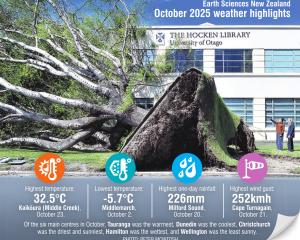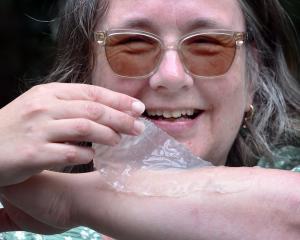
Dr Toy, a lecturer in the University of Otago geology department, is a co-principal investigator in another international drilling venture, the Alpine Fault Drilling Project, on New Zealand's West Coast.
She will fly out of Dunedin on March 28 to take part in what is officially known as Expedition 343: Japan Trench Fast Drilling Project.
The 212m-long deep-sea scientific drilling vessel Chikyu will leave port south of Tokyo on April 1, sailing to the drilling location 220km off the Oshika Peninsula in northeastern Honshu.
"I'm really excited about it," she said this week.
"If it's successful, it's going to be awesome."
The deep-sea drilling project was "extremely challenging" technically, the water being 6910m deep at the primary drill site.
The aim was to drill 1000m further into rock near the subduction zone fault that was active in the big quake.
The earthquake - one of the four or five most powerful quakes in the world since 1900 - resulted in more than 20,000 people dying in Japan, mainly as a result of the tsunami, which caused massive damage, particularly on the northeast coast of Honshu, Japan's main island.
Dr Toy said it was hard to come to terms with the sheer scale of the human disaster, but she was "honoured" to be able to participate in a research which "may advance our understanding" of the quake-related faulting.
The extent of the fault movement in the Japanese quake - about 50m sideways and up by 10m - was larger than scientists had previously observed.
It was hoped that by gaining a clearer understanding of the mechanisms involved in the magnitude 9 earthquake and subsequent tsunami, people could ultimately be better protected from future quakes, she said.
Chikyu is operated by the Japan Agency for Marine-Earth Science and Technology.
The expedition is also part of the Integrated Ocean Drilling Programme, which is a long-standing international scientific collaboration jointly funded by the Japanese Government and the United States National Science Foundation.
New Zealand is among several other countries providing additional support.
Organisers said the main aim of the project was to "understand the very large fault slip" that occurred on part of the subduction zone during last year's Tohoku earthquake, including taking rock samples from the fault.
"I have a lot of expertise in looking at [the] microstructure of earthquake fault rocks,"she said.
She would be one of the scientists on board responsible for "analysing and interpreting data arising from geophysical measurements down the borehole", and for documenting and describing the structural geology of any core material recovered.
Applying knowledge from the Japanese research to the continuing New Zealand-based alpine drilling research programme was also likely to prove "very, very important", she said.
The shipboard science party comprises 28 people from 10 countries.












